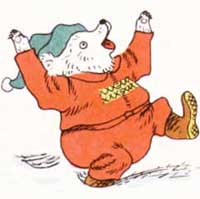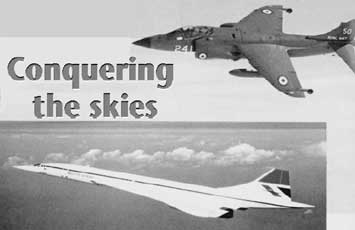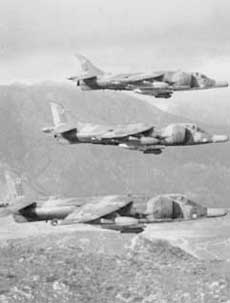



| Hello Children,
A big thank you to all of you who sent in cards and greetings to Junior Times. This week we have an interesting article sent by one of you about the Postman. Have you ever thought about what would happen if the postman failed to deliver our letters? We will not be able to communicate with our friends or loved ones, never get a card or letter that might make us happy when we are feeling sad. Most of us take for granted people who come to sweep the streets, labourers, the paper man, even our postmen who never fails to showup with a bunch of letters. We would hardly spare a thought for such people, and may think that it's their job and their duty to serve us. Don't forget that they are also people with feelings and self respect. Try to understand and appreciate the service they render. Until next week, Aunty Sunshine |
Once there was a little polar bear who began to have a cold. But he didn't want to stay indoors. So he said his cold didn't amount to anything. And he said that he had a good, warm snowsuit, anyway. And away he went, skipping through the deep snow, and fishing in the icy water.
That was pretty cold for a little bear with a cold. Pretty soon, he was sniffling and sneezing. The other bears, and the walrus children and reindeer, ran away from him, saying, 'We don't want to play with you,'cause your cold is catching!'
And a doctor, on his way back to the trading boat, took one look at the little bear and said, 'You'd better get home with a hot water bottle!'
The little bear just laughed at that good advice. But suddenly, his
laugh turned into a cough and his eyes began to water. And his legs felt
so queer and weak that he sat right down in the cold, deep snow - wishing
he could go home, but not even able to get up. And oh, how that little
bear sneezed!
'Look at that!' cried all the father Eskimos 'This sneezy little bear will start a regular epidemic unless we hurry up and do something about him!'
So they quickly sent their little Eskimos home, and they cut big blocks of ice, and they hurried up and built an ice igloo all around the little bear. Right over his top, sneezes and all.
A very kind lady Eskimo passed him in a hot-water bottle, a hot lemonade, and two double blankets in a cheerful red-and-white pattern.
All fixed up like that, the little bear began to feel better at once. In three days he was feeling fine. And in six days he was ready to go out again.
But it was days and days and days before he had anyone to play with. In the first place, all the other little bears, and the walrus children and reindeer and little Eskimos, had caught bad colds from the sneezy little bear's sneezes.
And in the second place, they were all pretty cross about it.
So, when at last they were well again, and the sneezy bear had managed to make friends with them again, he was a far wiser little bear.
He was such a wise little bear that, from that day to this, whenever he begins to get a cold, he stays indoors from the very beginning. And when he stops sneezing, and can go out again, all his friends are waiting to play with him - and very glad to see him, too.
The postman is a very humble worker and especially in the country where he has to make long journeys by bicycle. He has a tiring job but he is an important part of a great system, which would break down but for him.
We send letters to our frineds in far-off plces. When you post a letter a postman has to come at a fixed time to open the letter box and take all the letters and post cards he finds there, to the post office. There clerks sort the letters and stamp them and put them in to different bags which will take them to the relevant places. All these bags are carried to the railway station in a post office van and handed over to the guard of the train to be put in the mail van. The train starts on its long journey and all the way clerks inside the mail train are arranging the letters and bags in order to give them out at the right stations.When the train reaches the station of the town to which your letter is addressed the bag with all the letters for that place is handed out. It is then taken in the post office van to the head post office and then the bags are opened, the letters taken out, stamped and arranged and done up in packets for postmen to take. A postman takes your letter in his bag and finds the house of your friend and delivers it.
So the postman is the first and last link in the long chain.
She was genuine, she was beautiful,
She was glamorous,
Cinderella of the 21st century, the princess of Wales,
Loved by everyone,
For her warm heart and generosity,
She spent most of her time,
With the unfortunate, needy and dying,
Around the globe,
laughed with them, cried with them,
Perhaps it helped to ease her own pain,
A facinating woman of great style and fashion,
The most photograhed women in the world,
There was always someone with a camera,
Not far away,
This same thing led her to that tragic death,
Di's story has ended,
Now the legend begins,
So good bye England's rose,
may you rest in peace,
Rise in glory.
My birthday party was held on a Friday. I was very happy because it was a public holiday. I got up early on this day. My mother gave me a new dress as a present. My mother is a good cook. She had prepared several tasty dishes for lunch. After lunch my father made a short speech and gave his best wishes to me. My mother said "May the Holy Triple Gem bless you".
I had invited several of my school friends to the party. We treated them with sweet meats, cakes and biscuits. Some of them had brought some musical instruments. They sang songs and danced. My father sang an old Baila song and danced with them. In the evening at about 5.30 p. m. they wished me "Many happy returns of the day".
Then there was a surprise for them. Mother brought them a tray of ice-cream. After that my friends thanked all of us and went home.
For centuries, men dreamed that they would one day conquer the skies, and fly. Then came the first attempts of the pioneer aviators, which sometimes met with disastrous ends. Now, the awesome power of Concorde or a Harrier jet is something which we almost take for granted.
But just how does an aeroplane fly?

BACK TO BASICS
The most basic part of the study of aerodynamics concerns lift. To get off the ground, any aircraft must produce enough lift to overcome the forces of gravity, which are pulling the plane - and everything else, including ourselves - down to earth.
To achieve lift, most planes have a curved top surface and a flat under-surface. Air flowing over the curve at the top has to travel further than air passing beneath, and so it goes faster, lowering pressure and creating suction. Also, the air below the aircraft is slowed down and compressed, and this adds to the lift, by pushing the aircraft upwards.
The wing area, or aerofoil, is curved to give more lift, and in general terms the greater the wing area, the better the lift.
THRUST AND DRAG
Thrust is the force which pushes an aircraft forwards through the sky. It is probably easier to understand in the case of a propeller-driven plane, where the rotation of the propellers reduces the air pressure in front of the aircraft, and so it moves forwards.
But everything has an opposite, and the opposite force to thrust is called drag. This force resists the forward motion of an object through air.
Here again the shape of the aircraft is very important, because a streamlined shape will cut down as much as possible on drag. This is one reason why the landing gear is retracted into the body of the plane as soon as possible after take-off.

THROUGH THE SOUND BARRIER
As recently as the 1940s, many people believed that it was impossible for aircraft to fly faster than sound. It was thought that the so-called 'sound barrier' would never be broken.
When an aircraft travels through the air, pressure waves build up in front of it, and move away at the speed of sound. But when the plane itself is moving at close to the speed of sound they cannot disperse, and they 'bunch up', producing turbulence around the plane. This effect was felt by diving fighter planes in the Second World War.
Only a few far-thinking aircraft designers - and some brave test pilots - dared to make the attempt to crash through 'the barrier', and fly faster than the speed of sound.
After many experiments, they found that the ideal-shaped aircraft for this purpose was one with a 'wasp-waist' fuselage, swept-back wings, and a needle nose, and that this shape would almost completely eliminate any buffeting.
The Anglo-French Concorde is the best-known example of a supersonic plane, and passengers travelling on this luxury airliner don't even spill a drop of their champagne as the magnificent aircraft 'goes supersonic'!
THE JUMBO JET
The massive Boeing 747 airliner soon earned the nickname of'Jumbo Jet'. The 747 entered service on Pan Am's New York to London route in 1970, with a cruising speed of 950 kilometres per hour.
Carrying 490 people in great comfort, it was soon a favourite with many of the world's airlines, and a familiar sight in the skies.
Whether passenger aircraft can, or should, get much bigger than the Jumbo is a subject much debated by the designers. Only the future will tell.
VTOL
One of the most exciting developments in aircraft technology has been the great success of VTOL planes. VTOL means Vertical Take-Off and Landing, and possibly the finest example of these aircraft is the Harrier jump jet.
This fantastically versatile aircraft can take off and land on a piece of ground not much longer than its own length, and in level flight, it can exceed the speed of sound.
It has a single jet engine, which is mounted in just the same way as in a conventional aircraft. Swivelling nozzles, however, allow it to direct the blast of the exhaust in various different directions, and this gives it its remarkable manoeuvrability.
A military aircraft basically, the Harrier is much in demand at air shows, where it can demonstrate its astonishing feats of aerial agility.
Return to Mirror Magazine contents
![]()
Please send your comments and suggestions on this web site to
info@suntimes.is.lk or to
webmaster@infolabs.is.lk